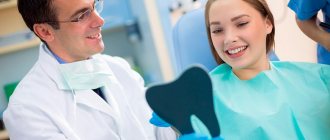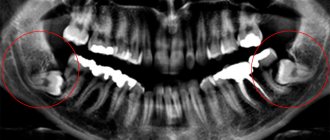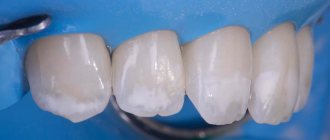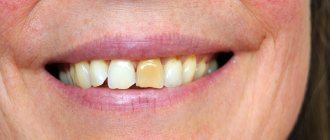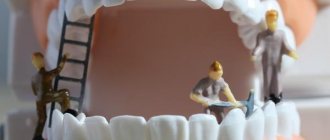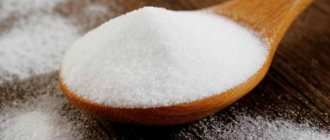Author of the article:
Soldatova Lyudmila Nikolaevna
Candidate of Medical Sciences, Professor of the Department of Clinical Dentistry of the St. Petersburg Medical and Social Institute, Chief Physician of the Alfa-Dent Dental Clinic, St. Petersburg
The human oral cavity is often called a mirror of the state of the body. A qualified dentist, after performing a visual examination of the oral mucosa and teeth, can determine what chronic diseases the patient has and advise him to see a specific doctor. Thus, diseases of the endocrine or nervous system, gastrointestinal tract or blood diseases can be diagnosed using the oral cavity.
At the same time, if there are chronic diseases in the oral cavity, then they, in turn, can become a provoking factor for the development of rheumatism, pyelonephritis and some other diseases. Remember how, for example, pregnant women before giving birth and patients before a planned operation need to obtain a certificate of oral sanitation. Therefore, prevention is very important for everyone. Moreover, we are talking not only about a beautiful and healthy smile, but also about health in general, and also, of course, about those funds from the family budget that will have to be spent on treatment at the dentist.
Prevention of oral diseases
When they talk about the prevention of oral diseases, they primarily mean:
- Self-regular oral care.
- Periodic visits to the dental clinic.
Why do you need to take care of your mouth? The fact is that after each meal, food particles remain on the teeth and mucous membranes of the mouth, as a result, upon contact with saliva, bacteria and microbes begin to multiply in the mouth, which ultimately leads to the appearance of caries, bad breath, plaque and dental plaque. stone
Some people, unfortunately, do not understand the importance of this procedure, erroneously claiming that animals don’t brush their teeth or anything. But we must not forget that animals live much shorter lives, and, most importantly, they monitor their diet, consuming sufficient quantities of food of plant origin.
Prevention of caries
This pathological process of changes in enamel and hard tissues affects up to 98% of the entire population of the planet, so the relevance of preventive procedures for this disease does not need to be confirmed.
Measures to prevent the occurrence and development of caries:
- It is important to monitor your diet: protein foods, foods that contain large amounts of amino acids, trace elements and vitamins (especially calcium and phosphorus), are an excellent non-drug method for preventing caries.
- At the same time, you should limit your carbohydrate intake, give preference to sweeteners, and avoid drinking too hot or too cold drinks.
- Regular and thorough oral hygiene, which is accompanied by the use of toothpastes that have a therapeutic and prophylactic effect.
- The use of various kinds of complexes of vitamins, macro- and microelements, which the body (especially a growing one) needs most.
- Applications, rinses, baths, electrophoresis, which are carried out by various remineralizing agents.
Brushing your teeth with a toothbrush
The most important thing in preventing oral diseases is brushing your teeth. Every person, regardless of age, including children, should brush their teeth morning and evening. Moreover, observing certain rules.
- You need to brush your teeth for at least five minutes.
- Brush your teeth with rotational movements, otherwise, if you brush straight, the plaque will simply be driven into the gum pockets and between the teeth.
- Do not press the brush too hard to avoid damaging the enamel.
- When brushing your teeth, mentally divide all your teeth into four sections and brush each one separately so as not to spread germs throughout the jaw.
- You need to brush not only the teeth from above, but also near the gums, at the base, and also the gums themselves.
- Dentists recommend placing the brush at an angle of 45 degrees when brushing your teeth.
- First you need to brush the far teeth of the upper jaw, then the front teeth, turning the brush vertically, and then start cleaning the teeth of the lower jaw. Finish brushing your teeth by massaging your gums and brushing your tongue.
- In this case, you should take no more than a pea-sized amount of toothpaste.
Panoramic shot
A dental panoramic photograph is a circular digital image of the entire jaw in a two-dimensional plane.
This examination allows you to:
- identify hidden caries;
- diagnose the condition of teeth under crowns and fillings;
- assess the health of canals and root tips;
- determine the presence of permanent tooth buds in children;
- establish periodontitis disease;
- monitor the condition of teeth during implantation and prosthetics.
An orthopantomogram, like a dental photograph, significantly increases the capabilities of dentists and allows them to see what cannot be detected during a visual examination.
How to choose the right toothbrush
Just as important as brushing your teeth is choosing a good toothbrush. Experts advise purchasing a brush with artificial bristles, which is considered more hygienic, practical and durable. As for the optimal degree of hardness, if the patient does not have any special indications, a regular brush of medium hardness will suit him.
It is also worth paying attention to the size of the toothbrush - optimally it should cover three teeth.
We must not forget that the brush needs to be changed periodically. It’s difficult to say how often to do this, because for some the brush can wear out in a month, while for others it can last two to three months. This depends on many factors, in particular, how often you brush your teeth, with what force you do it, how long the procedure lasts, and what toothpaste you use.
Therefore, some dentists advise purchasing toothbrushes with colored tufts of bristles, which are indicators. On a new brush they are always bright, and when the bristles wear out, they take on a pale blue tint. Noticed this on your toothbrush? It's time to go to the pharmacy for a new one.
If your brush does not have such indicators, simply change it at least once a quarter.
Recently, electric toothbrushes have become popular, although the attitude towards them from professional dentists is rather ambiguous. Therefore, before purchasing such a modern brush, it is better to consult your doctor.
Battery-powered teeth polishing devices are also available on the market. According to dentists, they can be used, but not often, as they can damage the enamel.
Dental X-ray
A dental x-ray allows you to obtain detailed information about the condition of your teeth and see them completely from root to crown.
Such a picture is necessary to determine:
- depth and magnitude of carious processes;
- condition of the roots and adjacent tissues;
- periodontitis;
- periodontitis;
- location of teeth in the jawbone;
- presence of abnormalities and neoplasms;
- inflammatory processes under fillings;
- possible destruction under artificial crowns;
- complications associated with wisdom teeth, etc.
Toothbrush care
There are also rules on how to care for your toothbrush so that it helps maintain oral health and does not harm your teeth and gums. What is needed for this?
- Never give your own toothbrush or borrow someone else’s toothbrush, even from your own family members.
- After each brushing procedure, the brush should be washed with soap. You can use it next time only when it is completely dry.
- It is advisable for each person to have two brushes: one for use at home, the second “travel brush” to take with you on trips.
- To clean the brush from germs, you can use various antiseptics or rinses.
- Each brush should be dried in a cup separately from the others, without touching them. Ideally, you can use a “cap” or case for each brush.
Eating habits
The condition of our teeth largely depends on what we eat. It is recommended to minimize the intake of fast carbohydrates (various sweets, flour, carbonated sweet water, etc.). It is necessary to saturate the diet with fermented milk products, fresh fruits and vegetables. It is important that the body does not experience a deficiency of vitamins or microelements.
Important! Food that is too cold or hot is extremely harmful to teeth; this can lead to increased sensitivity of the enamel.
How to choose toothpaste
When choosing a toothpaste, it is a good idea to consult your doctor. Do not get carried away with abrasive toothpastes: it is better to alternate them with regular ones. For children, you should buy special children's pastes, according to their age. For people with sensitive gums and teeth - professional pastes.
In general, all toothpastes that are available in pharmacies today can be divided into:
- hygienic, which are suitable for everyone, as they do not contain special medicinal components;
- therapeutic and prophylactic: they can also be used daily as a prophylactic against various diseases;
- medicinal: they should be used only as prescribed by a doctor.
If for some reason a person does not like toothpastes, then he can use special dental gels to clean his teeth. However, we must not forget that in terms of their abrasive properties they are significantly inferior to pastes.
And during the day, when it is not possible to use toothpaste, or after morning or evening brushing, you can use dental elixirs.
We recommend Asepta toothpastes. They are designed to meet all oral hygiene requirements. The components they contain effectively clean teeth, strengthen enamel, prevent the occurrence of caries, and gently freshen breath.
Preventive dental procedures
At your dentist’s appointment, you can perform several preventive procedures that will protect your teeth from various diseases:
|
Clinical researches
ASEPTA toothpastes are clinically proven effective. For example, repeated clinical studies have proven that regular use of preventive toothpaste ASEPTA SENSITIVE for a month can reduce bleeding gums by 62%, reduce the sensitivity of teeth and gums by 48% and reduce inflammation by 66%.
In addition, it was proven that regular use of professional toothpaste ASEPTA COFFEE AND TOBACCO for a month improved the hydration of the mucous membrane by 3.3 times, the remineralizing efficiency increased by 3.9 times, at the same time, the cleansing effect has increasing dynamics and reaches 60.5% at 4 weeks of use.
Sources:
- Clinical studies of antisensitive toothpaste “Asepta Sensitive” (A.A. Leontyev, O.V. Kalinina, S.B. Ulitovsky) A.A. LEONTIEV, dentist O.V. KALININA, dentist S.B. ULITOVSKY, Doctor of Medical Sciences, Prof. Department of Therapeutic Dentistry, St. Petersburg State Medical University named after. acad. I.P. Pavlova
- Report on determining/confirming the preventive properties of toothpaste “ASEPTA PLUS” COFFEE and TOBACCO Author: doctor-researcher A.A. Leontyev, head Department of Preventive Dentistry, Doctor of Medical Sciences, Professor S.B. Ulitovsky. First St. Petersburg State Medical University named after. acad. I.P. Pavlova, Department of Preventive Dentistry
- Report on determining/confirming the preventive properties of toothpaste “ASEPTA PLUS” GENTLE WHITENING” Author: doctor-researcher A.A. Leontyev, head Department of Preventive Dentistry, Doctor of Medical Sciences, Professor S.B. Ulitovsky First St. Petersburg State Medical University named after. acad. I.P. Pavlova, Department of Preventive Dentistry
Dentistry in Ivanteevka will cure everyone’s teeth
Dental clinic "Sanident" is one of the leading ones in Ivanteyevka. We provide services for the treatment of dental diseases of various forms. Our specialists use only the latest European equipment, high-quality materials and reliable tools. We employ highly qualified doctors who constantly improve their knowledge and are able to solve any problem related to dental health. We provide high-quality treatment of caries, prosthetics, installation of implants, whitening and much more. With us you will get a truly healthy and radiant smile.
Complex dentistry "Sanident" is located at the following addresses:
- Ivanteevka, st. Novoselki, 4 (Ivanteevka railway station);
- Shchelkovo, st. Central, 80 (railway station Voronok).
BIBLIOGRAPHICAL LIST
Ch. editor - S.E. Shorin (e-mail: [email protected] ) Technical editing and layout - VA. Sysykina
License LR No. 065167 dated May 12, 1997. Signed for publication on January 16, 2001. Format 60x88 1/16 Offset paper No. 1. Typeface Petersbyrg. Offset printing. Pech. l. 21.75. Circulation 2000 copies. Order 4146 I.G. “Medical Book” 101000, Moscow, PO Box 68 Publishing House NGMD 603002. Nizhny Novgorod, st. Chkalova, 6 Printed at the VINITI Production and Publishing Plant, 140010, Lyubertsy, Moscow region. Oktyabrsky Prospekt, 403. Tel.: 554-21-8G
Fissure sealing
Fissure sealing is a method of caries prevention. The relief of the chewing surface of the tooth (fissure) constantly contains food debris with bacteria and their acids, which cause caries. Due to the anatomical structure of the tooth in this area, the percentage of caries in the fissure of the tooth is close to 100%. Sealing fissures in the early stages of tooth development eliminates the occurrence of caries. It is advisable to carry out the procedure before the carious process occurs, since when caries occurs in the fissure enamel, it is necessary to carry out preparation in order to remove the pathological process, which quickly penetrates inside the tooth and causes complications.
Methodology of the procedure. Thorough cleaning of the tooth with paste, Airflow or an ultrasonic scaler, the tooth is isolated from moisture, dried, and then the fissure is sealed. This is a non-invasive fissure sealing technique. The invasive technique involves the stage of preparing the tooth before applying the sealant.
Recommendations. Seal fissures on the chewing surface of all teeth. Every 4-6 months, check the integrity of the sealant on the tooth surface, since when eating and having bad habits (chewing pencils and similar objects), there is a risk of the sealant chipping. If there is a violation of the integrity, chips, or cracks of the sealant, then the carious process in this area begins to arise and progress at a surprisingly fast speed, forming a cavity in the tooth.
Remineralization of teeth
Remineralizing dental therapy is the introduction of mineral components, such as calcium, phosphorus, and fluorine compounds into tooth enamel, helping to stop the demineralization process or the disappearance of stains (extremely rare). The process of demineralization (destruction of enamel) in the oral cavity occurs constantly. Saliva in the oral cavity has remineralizing properties, which make it possible to stop caries in the stain stage, but only by 50%, so remineralizing therapy in a dental office is simply necessary.
Methodology of the procedure. Before carrying out remineralization therapy, it is necessary to have the tooth or teeth professionally cleaned by a dentist. Next, a remineralizing preparation is rubbed into the enamel using a special applicator. The effectiveness of this procedure is revealed by repeating the procedure three times in the dentist’s office every day or every other day. The frequency of the procedure is at least 3-4 times a year.
Remineralization of enamel at home allows you to enhance and prolong the effect of care that began in the dentist’s office. To do this, you need to make a soft and durable individual mouthguard. After you have the mouth guard in your hands, the dentist will explain the technique and method of using the mouth guard with various medications at home. To make a custom mouth guard, you need to take a dental impression (impression).
Recommendations: after the remineralization procedure, refrain from eating and drinking for about 2 hours.
